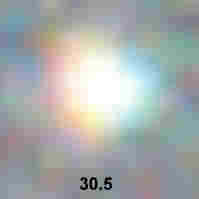
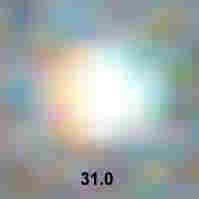
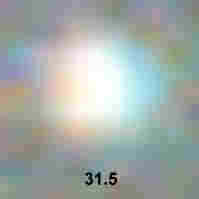
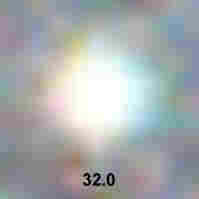
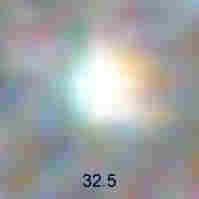
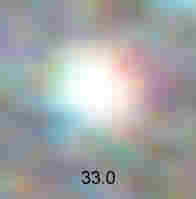
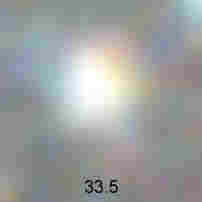
Focusing the Takahashi BRC-250 Astrograph
The Tak BRC is able to hold focus over a wide range of temperature variation due to the use of carbon fiber material for the tube as well as invar and other carefully chosen materials for the secondary spider and the mirror cells. After using the BRC for a year, I am convinced that it can be focused once and then left unchanged throughout the year. Until the optics are recollimated, the focus should remain constant. Fortunately, due to the extremely rugged construction of the BRC, recollimation should not be needed until the optics are removed for some reason such as cleaning or recoating.
The BRC uses a 4" inside diameter helical focuser having 36 graduations marked and numbered sequentially on its circumference. Each graduation is further divided in half by an index line resulting in 72 clearly marked reference points per rotation. Because one rotation of the focuser moves the film plane only 1 mm, it is possible to move the focal plane in increments of 1/72 mm or 0.000547 inches. It is possible to resolve even smaller increments by using positions between the marks but (so far) I haven't bothered. The focuser includes a locking ring to hold it firmly in position once it is set.
After finding the approximate focal point using a knife edge or other means, a series of photographs can be taken at focuser positions bracketing this point. Then the optimal postion can be selected by examining the images.
Below is a series of images taken near M13. Each exposure was for only 4 minutes to avoid other impairments such as field rotation and guiding. The film used was 35 mm Kodak Max400 which could be developed and scanned quickly (kudos to Warren Keller for doing the scanning). The images were taken from my front yard which is heavily light polluted by nearby NYC as well as street lights. As a result, the images are quite noisy but are still adequate for their purpose. A star having a diameter of around 4x4 pixels (44 microns) was selected within the field. Other than cropping and resizing to zoom in on the selected star, no image processing was performed. The number at the base of each image is the focuser position.







As can be seen, a small amount of chromaticism is contributed by the 2 element Baker field flattner when the system is not correctly focused. This results in a slight blueish edge to one side of the star and a goldish edge on the other side. In the left most image at focuser position 30.5, the bluish edge is to the right of the star while the goldish edge is to the left. This situation reverses between focuser positions 32.0 and 32.5 so the optimal focus is between these two points, possibly a bit closer to 32.5 than to 32.0 since the star in 32.5 is slightly more compact.
Clear Skies!
Steve...